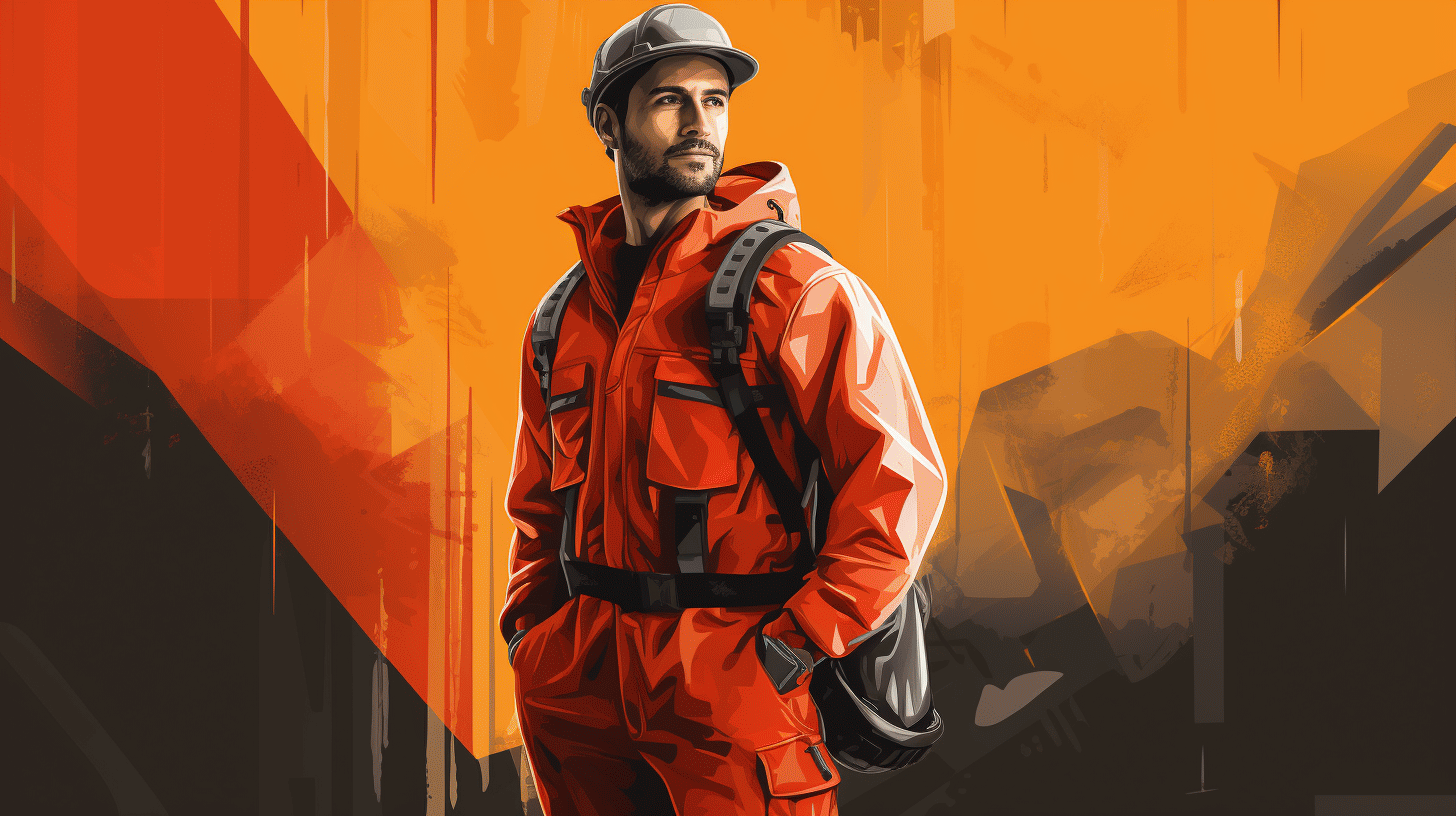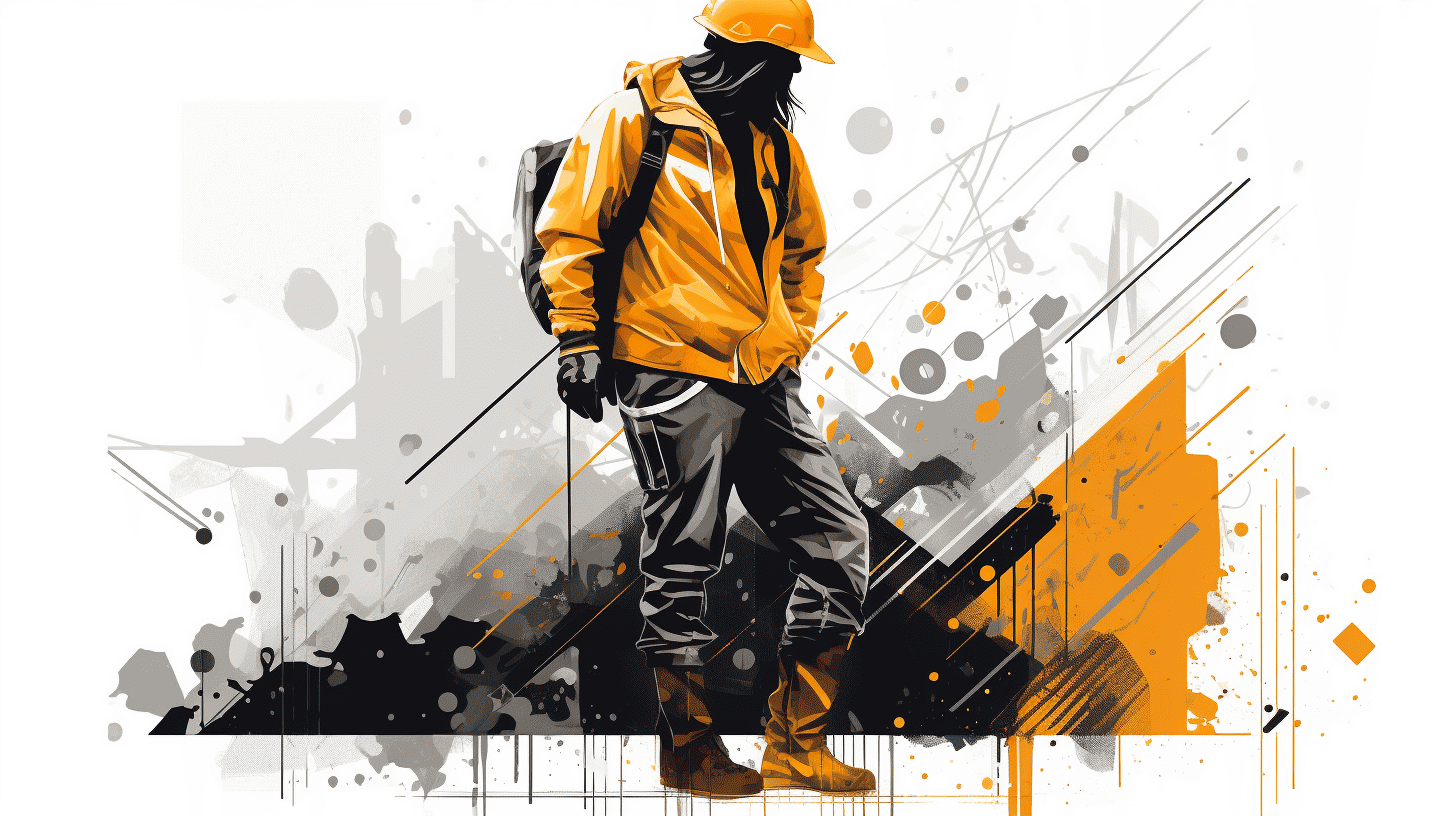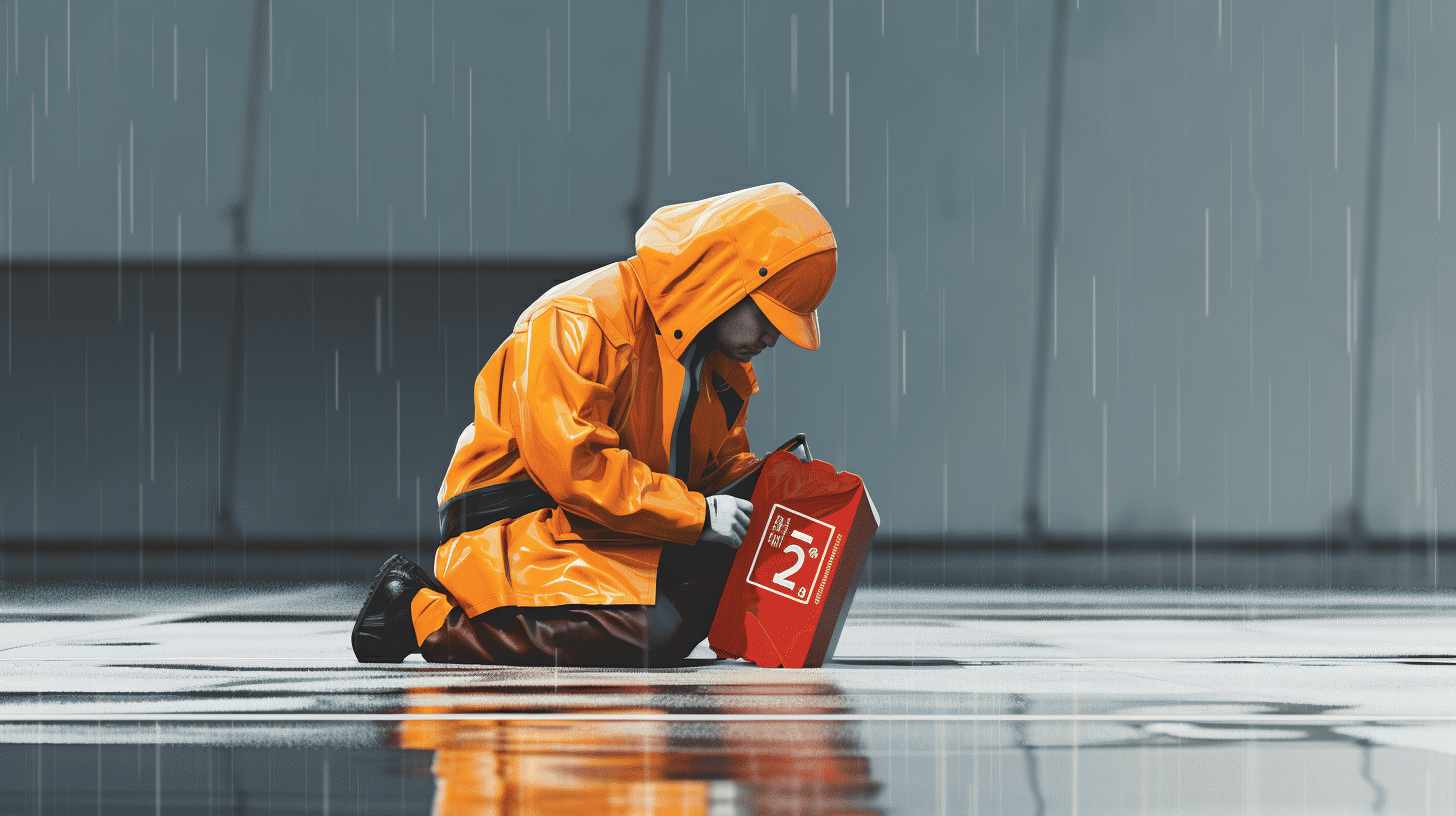The world of construction is both challenging and rewarding. Just ask any construction worker; they'll tell you that, oil-stained gloves and dust-caked boots aside, there's nothing quite as exhilarating as seeing a project progress from mere blueprints to full-blown structures. However, with the thrill of construction come several obstacles, not least of which is unfavorable weather. Rain, in particular, should never be underestimated. One could even argue that rain is a construction site's most relentless adversary, making everything slippery, muddled, and hazardous. And this is where high-quality rain gear becomes crucial. We are not just talking about simple umbrellas or basic raincoats. In construction, rain gear needs to be dependable, and that means being both waterproof and tear-resistant. Let's now dive into the essentials of rain gear for construction work and understand why it's an absolute necessity to invest in the right type.
Rain or shine, the construction industry never stops. Yet, the weather often has its own plans, frequently developing into a formidable adversary against safety and productivity on the construction sites. Despite this ongoing tussle with Mother Nature, there are ways to maintain a champion's stance. The heavy lifting here isn't carried out by burly construction equipment but by the unassuming yet vital—rain gear.
Weather Challenges in the Construction Industry
Among the many concerns in construction, whether it’s the passage of time or the whisper of the wind, none quite captures attention like the unrelenting downpour of rain. This natural phenomenon brings unique challenges. Elements such as decreased visibility, slippery surfaces, muddy work spaces—not to mention the risk of lightning—are inherent issues when rain decides to join the construction crew.
These weather conditions take a toll, not only on the task at hand but also on the health and safety of the workforce. Cold, damp environments often pose the risk of hypothermia and other respiratory issues. Construction workers are no strangers to the difficulties caused by unfavorable weather, which can negatively impact their everyday operations.
Importance of Waterproof Gear
This is where quality waterproof gear steps in to combat the rain. Rainproof construction clothing, like raincoats and ponchos, plays a significant role in shielding workers from the harsh weather, making sure they stay dry and comfortable no matter what.
Waterproof gear comes with several benefits:
- They act as the first line of defense against precipitation, keeping workers dry.
- They maintain body warmth by acting as an insulating layer.
- They promote health and safety by reducing the risk of conditions like hypothermia.
- They improve productivity as dry and comfortable workers are more likely to perform better.
By reducing the impact of weather conditions on construction work, waterproof gear ensures not just the functionality but also the longevity of the workforce.
Need for Tear-Resistant Clothing
Yet, durability is just as crucial as protection when it comes to construction clothing. This is where tear-resistant uniforms take center stage. Designed with reinforced fabric and construction, these garments provide additional durability under harsh conditions. Whether it's heavy rain or gusty winds, tear-resistant clothing stands up to the task.
What makes tear-resistant clothing so indispensable?
- Their enhanced durability means a longer garment life, reducing the need for frequent replacements.
- They provide better protection against abrasion and sharp objects onsite.
- They offer better value for money through their extended lifespan.
In the face of weather adversities, a construction worker’s life is greatly enhanced by good quality rain gear. Not only does it protect them from immediate threats, such as rain, but also contributes to long-term safety and comfort. After all, a well-equipped worker is a content and productive worker. By investing in quality waterproof and tear-resistant clothing, the construction industry can continue making strides, come rain or shine.
When it comes to braving the elements, your everyday garments do little to protect you. Whether intensifying an outdoor adventure or navigating through the city on a rainy day, having the right waterproof and tear-resistant gear is non-negotiable. This article will inform you about the leading materials popular for making such robust equipment - Nylon, Polyester, and Polyvinyl Chloride (PVC).
Nylon
Nylon is an unsung hero fabric in the world of waterproof and tear-resistant apparel. Its superior durability, water-resistance, and tear-resistance make it a favourite among manufacturers and consumers alike. Nylon serves as the prime material for rain gear - from impressive waterproof jackets to sturdy, long-lasting umbrellas. Not only does it ensure you stay dry during a downpour, but its robustness guarantees longevity. Therefore, when you need a reliable ally against the rain, look no further than nylon-based gear.
Polyester
Next up is Polyester, a heavyweight contender in the field of water-resistant fabrics. While it brings robust waterproofing to the table, polyester's real game lies in breathing. Unlike other water-resistant materials, polyester allows for an effective exchange of air. This means, while you're on a camping trip or out hiking, not only will polyester-based clothing keep precipitation at bay, but it will also stop you from turning into a sweltering puddle of sweat.
Polyvinyl Chloride (PVC)
Polyvinyl Chloride, commonly known as PVC, is the ultimate guardian when it comes to waterproofing. Its incredibly dense composition affords an impenetrable barrier against water, making it the ideal material for boots, gloves, and heavy-duty raincoats. While PVC might not have the breathability that other fabric options offer, when the goal is staying completely dry, it stands unbeaten.
Choosing the right material according to your needs can significantly improve your comfort and performance in challenging weathers. Be it the durable Nylon, breathable Polyester, or the impermeable PVC, each of these fabrics has unique strengths targeted to keep you safe and dry when it matters the most.
Exposure to rain can not only make you uncomfortable, but it can also have an impact on your productivity, especially if you're in the construction industry. To counter this, it's crucial to equip yourself with the right rain gear. Not sure what to look for when shopping for the right rain gear? Amid the myriad of options available, here are some significant features that every piece of rain gear should have for optimal performance:
Sealed Seams
A prevalent yet often overlooked feature that enhances your gear's waterproofing capabilities is sealed seams. They make sure that rainwater doesn't seep through the stitching, keeping you dry even in heavy downpours. Think of sealed seams as the last line of defense that ants use to keep their colony safe; they seal off any potential entry points, thus preventing the formidable enemy – in this case, water from entering.
Ventilation
Ever felt your clothing sticking to your body due to sweat and condensation after wearing a raincoat for extended periods? It's uncomfortable and can easily be avoided if your gear comes with ventilation features. It works in a similar way to the ventilation in your car: when it gets too stuffy, you simply open the vents to allow for airflow, making the ride a whole lot more comfortable.
Layering Compatibility
The weather can be unpredictable, and there might be times when you'd have to layer your garments. Thus, it's essential to choose rain gear that's layer-friendly. This way, you can comfortably slip on a sweater beneath your rain gear when it gets chilly and take it off when the weather warms up.
Safety Enhancements
Lastly, safety should never be compromised for comfort. Especially in construction settings, visibility is critical for safety. Therefore, choosing rain gear with reflective strips or other safety enhancements can be beneficial. Think of them as the blinking lights on an airplane wing during a night flight, catching attention and signaling location to prevent mishaps.
Choosing the right rain gear is more than picking the first one you see on the shelf. By considering features like sealed seams, ventilation, layering compatibility, and safety enhancements, you can ensure you'll stay dry and comfortable, come rain or shine!
How often have you found yourself in a downpour, soaked to the skin, frustratedly wishing that your rain gear was as dependable as when it was new? Indeed, weather-resistant clothing might seem indestructible due to being designed to brave the elements. Nevertheless, without appropriate attention and care, this type of gear risks damaging or losing its waterproofing capabilities over time.
To ensure that your rain gear retains its efficiency for years to come, follow these comprehensive tips on care and maintenance:
Cleaning Procedures
Proper cleaning takes a pivotal role in maintaining the life of your rain gear. However, it's essential to remember that this isn't just a matter of tossing your gear in a washing machine and hoping for the best. Peculiar though it may seem, excessive or improper washing can negatively affect the waterproof properties of these items.
- Always refer to the manufacturer's instructions before attempting to clean your gear.
- Avoid using regular detergents, fabric softeners, or bleach, which can potentially degrade the water-repellent coating.
- Opt for specially formulated cleaners that are designed to clean without causing harm to your gear's functionalities.
Remember, in the process of cleaning your rain gear, the objective is not just about removing dirt but also about preservation of the item's water resistance.
Storage
Just as crucial as cleaning is the proper storage of your rain gear. Improper storage, such as cramming your wet gear into a tight closet, could encourage the growth of mildew, ruin the fabric, or considerably decline the efficiency of the waterproofing features.
- Always dry out your gear thoroughly before storing it.
- Store it in a dry, reasonably temperature-controlled area.
- Avoid tightly folding or packing, as extreme pressure can create wear points that may lead to cracks or tears over time.
A little effort goes a long way. By maintaining and storing your gear properly, you will have reliable protection against the elements when you need it.
Routine Gear Checks
Your rain gear may be your constant companion during adverse weather conditions. Thus, routine checks are necessary to ensure it remains in optimal condition. Regular inspection can help to identify signs of wear and tear and decide when gear should be replaced.
In case of any damage:
- Fix small tears or holes immediately, using sealant or repair tape to prevent them from getting larger.
- Check for peeling or flaking of the waterproof laminate, as this often signals that it might be time for a replacement.
Ensuring that your rain gear stays in top condition not only involves correct cleaning and storage but also timely checks and repairs. Consistency in these measures can significantly uphold the protective capabilities of your gear - keeping you warm and dry regardless of what Mother Nature might conjure.
In essence, rain gear serves as a reliable shield against harsh weather conditions, aiding in comfort and protection. However, to achieve longevity and maximum efficiency, it requires the right care which involves suitable cleaning practices, correct storage methods, and routine checks for wear and tear. With these steps diligently followed, you can surely enjoy an unfaltering companionship with your rain gear for a considerably longer time.
In the larger scheme of things, ensuring safety and productivity in the construction field, especially against the elements, unfurls as a complex web. Essential protective gear, specifically rain gear, plays a pivotal role in this regard. They serve as the first line of defence against the capricious weather, enabling workers to continue their tasks safely and efficiently. The best protective outfits are deft craftworks of science and technology, blending together materials like Nylon, Polyester, and PVC for optimum waterproofing and tear resistance.
Moreover, features like sealed seams, ventilation, layering compatibility and safety enhancements amplify the armor's efficacy, offering heightened protection. However, like any other tool, the longevity and maximum efficiency of these rain gears are directly proportional to their maintenance. Proper cleaning, storage, and routine checks ensure their durability, ensuring they don't let the wearer down when it's raining cats and dogs.
To conclude, finding the perfect rain gear interweaves the understanding of materials, features and maintenance practices. Navigating this path might seem a daunting task, but in the end, the safety, comfort and productivity benefits that such gear brings to the hardworking construction professionals are truly immeasurable. It is a worthy investment that pays off in both the short and long term, often in ways beyond the obvious.
Frequently Asked Questions
-
What should I look for in waterproof rain gear for construction work?
When searching for waterproof rain gear for construction work, it's important to consider factors such as material durability, waterproof ratings, breathability, comfort, visibility, and added features like reinforced seams and adjustable cuffs.
-
Which materials are commonly used for tear-resistant rain gear?
Common materials used for tear-resistant rain gear include PVC (Polyvinyl Chloride), nylon, polyester, and ripstop fabrics. These materials are known for their high durability and ability to withstand tears and abrasions.
-
Do I need tear-resistant rain gear for construction work?
Yes, tear-resistant rain gear is highly recommended for construction work as it provides added protection against sharp objects, rough surfaces, and potential tears or rips that may occur in challenging work environments.
-
What are some reliable brands for waterproof and tear-resistant construction rain gear?
Some reliable brands for waterproof and tear-resistant construction rain gear include Carhartt, Helly Hansen, Columbia, Dickies, and Marmot. These brands are known for their quality craftsmanship and durable rain gear options.
-
How do I ensure the perfect fit for my rain gear?
To ensure the perfect fit for your rain gear, it's important to refer to the sizing charts provided by the manufacturer. Measure yourself accurately and choose a size that allows for comfortable movement and layering if necessary.























Leave a comment
This site is protected by hCaptcha and the hCaptcha Privacy Policy and Terms of Service apply.